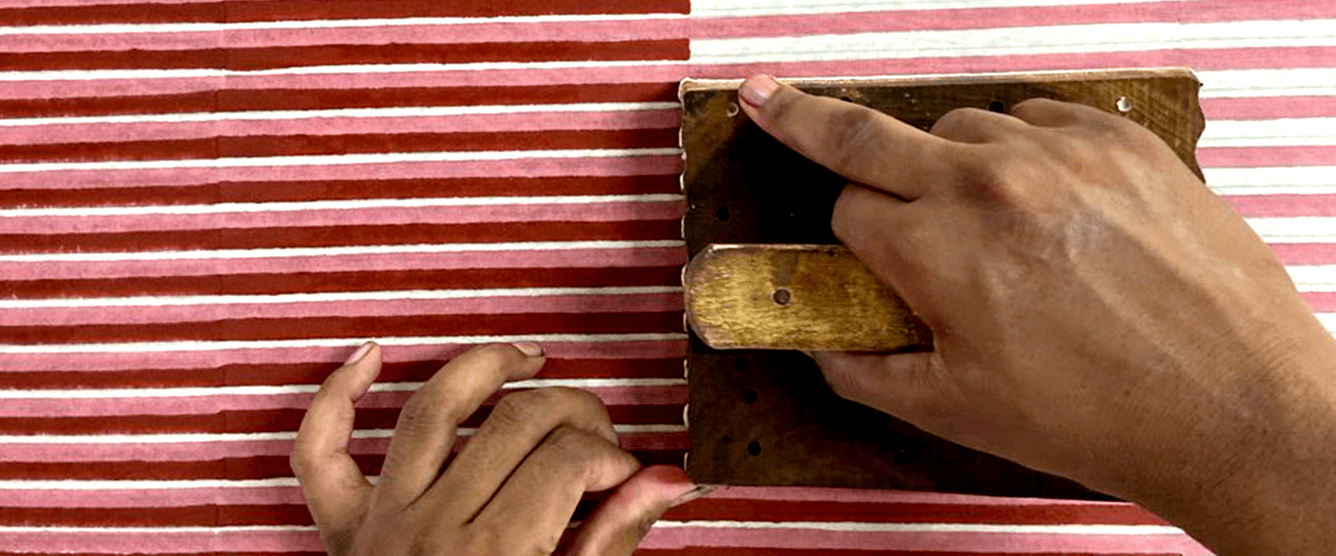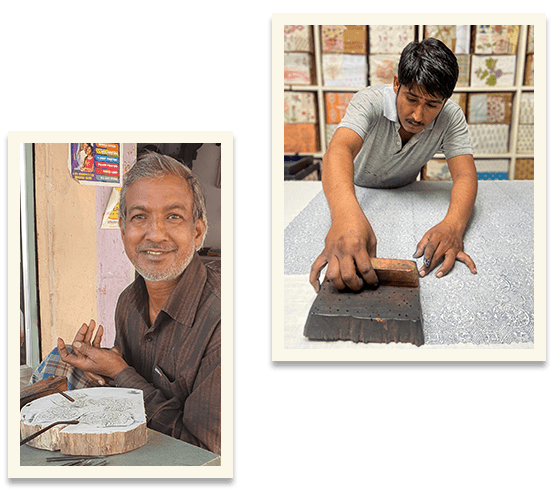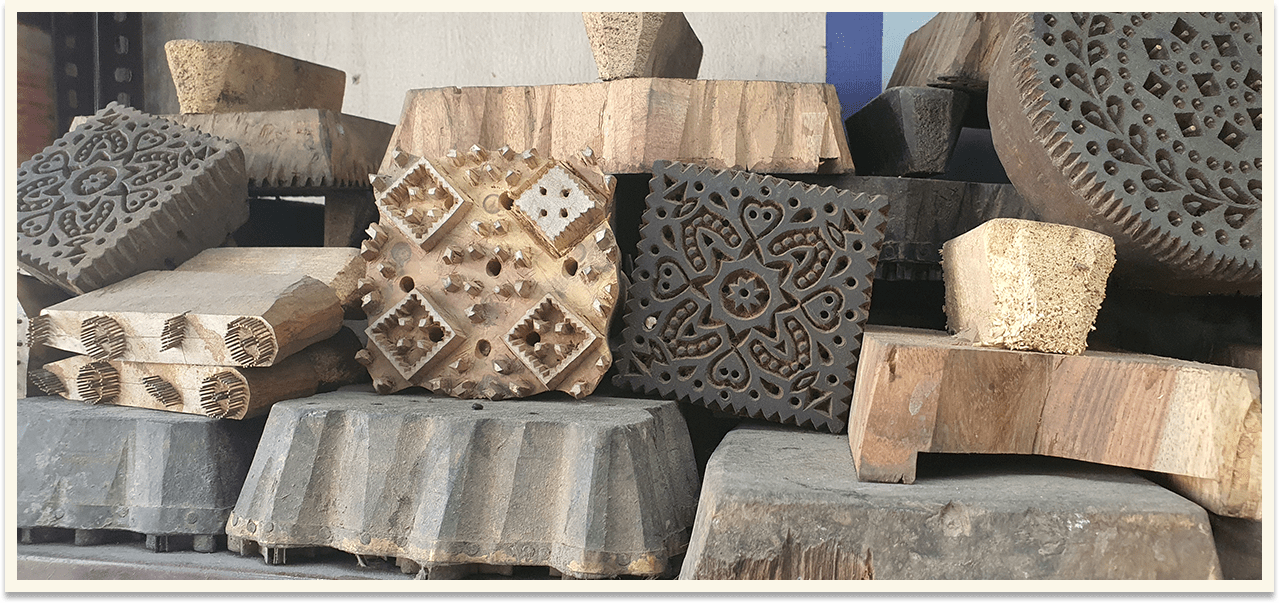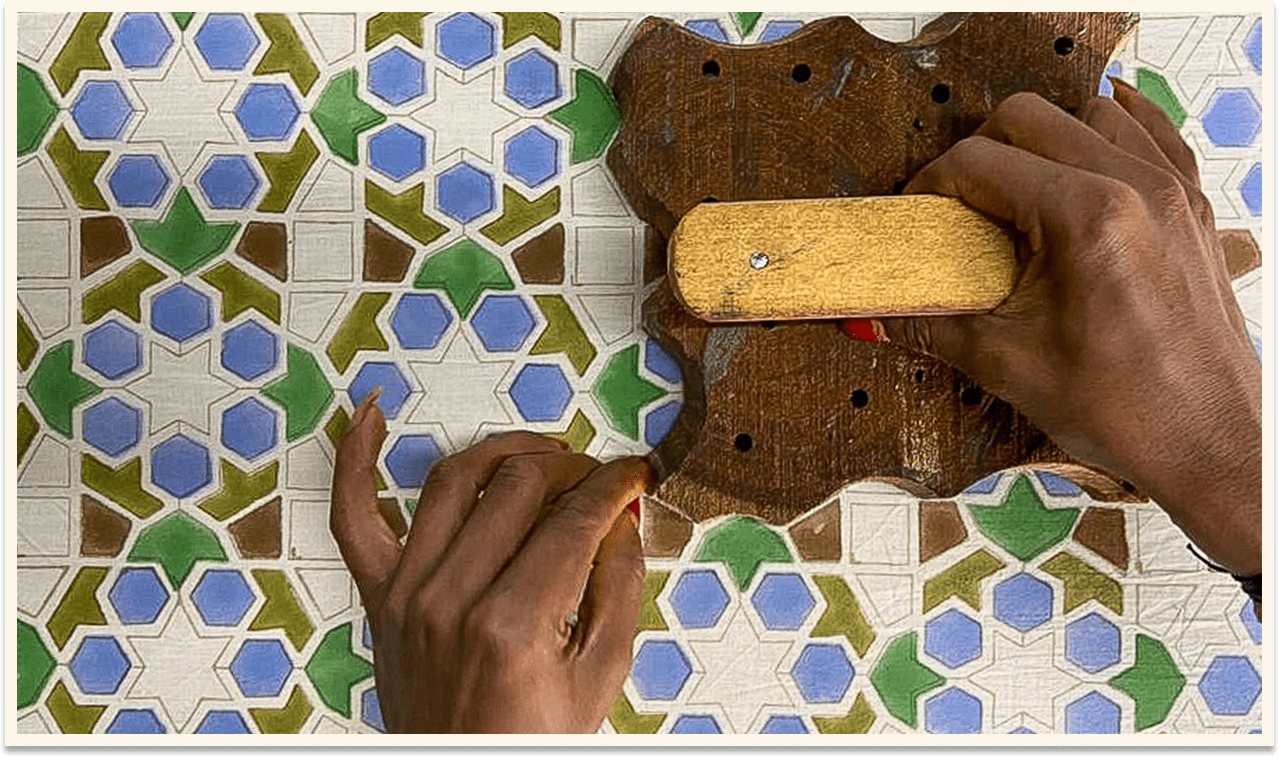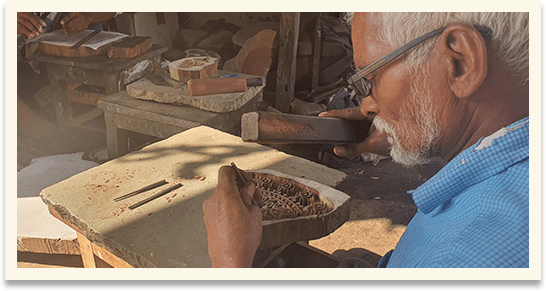
How a block print is made
The block printing technique has traditionally been used for printing textiles since 3500 BC. How exactly is this technique, which has survived the industrialization of fashion, performed, and why did we choose to print our summer collection in this way? We dedicate this blog to the art of block printing.
The word 'blockprint' says it all: the technique consists of printing textiles with a wooden block. Patterns are drawn on pieces of wood and then carved with narrow chisels. The Indian Rosewood tree (also known as Sheesham wood) is often used for this because these species are harder and therefore more suitable for cutting shapes without damaging the wood. The finished block looks like a relief work of art, similar to an etching, revealing the shapes of the future print. This is time consuming work, because each color of a print requires a different piece of wood to be worked and these pieces also have to fit together well.
Our summer collection, and part of the regular cotton cashmere collection, are printed using this technique. The part that is not printed with blockprint at Khasto is made with screenprint, also a craft, to which we will devote another blog. We opt for block printing, because we really like this way of printing (and it comes into its own for the Seasonal collection in particular because there is no layer of fabric over it as with the Cotton Cashmere collection) and each work gets a personal signature from the printer , and the one that cuts the block. The visible craftsmanship and beauty of block print cannot be replaced with modern printing techniques. Some printers use faster printing techniques that are not placed by hand, such as digital printing, with preset 'irregularities', to approximate the aesthetics of the block print.
Not only does this have an eroding effect on the preservation of traditional techniques and the cultural identity that is derived from them, the copy is also less alive than a real block print. There is a lack of depth and warmth. Wearing a block print contributes to the preservation of this technique. Blockprint is relatively little harmful to the environment, because this technique requires virtually no water. This is an extra reason to choose this technique to achieve our sustainability goals. Wearing a block print contributes to the preservation of this technique.

